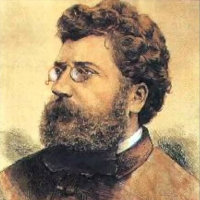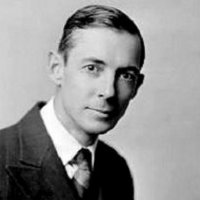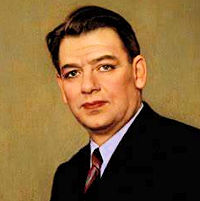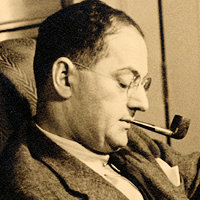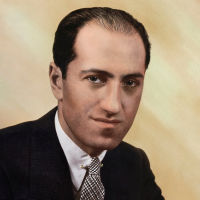| Handout (flat) Handout (folded) Class Script | Return to Index |
Q AND A
What is the most important difference between Broadway and Opera?
Of all the things I mentioned, the point I would leave you with is that in musical theater the words are the
most important; the singer may play with rhythm, pitch, and color to bring out their meaning, even at the expense of pure
music. In opera, though, the music is more important, and the sung numbers—as opposed to any connecting tissue (recitative)—
are delivered in as rich and resonant manner as possible.
Is it only on Broadway that you find interpolated numbers?
No. I should have pointed out that the first number I played, the Gypsy Dance from Carmen, is also inserted for no reason
other than to provide a fun dance and some local color. Although it serves a point in the plot, the Quintet is also
something of the same kind. But on the Broadway stage before around 1970, this is par for the course, as you saw with the
production of Anything Goes last week, which includes several numbers originally written for quite different shows. Instead
of "interpolated numbers," though, it might be more accurate to say "exportable ones." Older composers would write songs to
have a more or less specific function in the show, but also to work generically as Tin Pan Alley standards in the
aftermarket. The three numbers from Porgy and Bess we heard today where this is true are "Summertime," "A woman
is a sometime thing," and "It ain't necessarily so"; there are several others.
Does it matter if Porgy and Bess is an opera or a musical?
For most people, no; it is what it is—and if you like it, you like it. But this question has given the piece an unusually
fraught production history over the ages. I omitted to make enough of the point that several of the productions from 1935
to the present were essentially different shows, with different dialogues, different orchestrations, different
assignment of songs to characters, even significant plot differences—all depending on which audience they were intended to
serve. There is a vey full treatment of the history on
Wikipedia; it is worth reading.
What racial controversies surround the work?
I mentioned the attitude of many Black performers towards the work: glad of the gig, but uncomfortable with the stereotyping.
But this was a difficult subject to broach in the time available; again, there is a much fuller treatment on
Wikipedia. To be fair, the
requirement that the roles be played exclusively by Black actors was probably originally a way to avoid stereoptyping.
The age of blackface minstrels was not far enough in the past, and the authors wanted to avoid that at all costs; these people
were real. And some
sort of vernacular was inevitable; the characters would sound very odd speaking in a register not their own. If this were
a story being remade every few decades as a film, you would assume that the words would change slightly to what seemed most
comfortable each time. But when they are set to music, their rhythm and syntax becomes a permanent part of the score and can't be
changed. Pehaps the simplest approach is to do what I think someone suggested: to treat them as though they were an opera text
in a foreign language such as French or Italian?
What is the implication of the title The Gershwins' Porgy and Bess?
Apparently, this is now a contractual requirement; it is not clear when and why it became so. But it implies that George
Gershwin wrote all the music (which he did) and his brother Ira wrote all the words (which he didn't). There are about two
dozen separate numbers in the work, but Ira wrote only five ("Bess, you is my woman now" and "It ain't necessarily so," plus
three others). The rest were by DuBose Heyward, who also wrote the book. But the Heyward estate seems to have agreed to the
required title change, so who am I to complain?
VIDEO LINKS
All the clips in the first hour are available on YouTube at the links below. I have added a documentary on the Diane Paulus production of Porgy and Bess and Stephen Sondheim's complaints about it, plus a couple of other items. Clips not played in class are *asterisked*.
The complete Porgy and Bess from the San Francisco Opera that we sampled in class, however, is represented only by a fairly substantial tailer. To give more of a sense of how Porgy plays on an opera stage, I have included a trailer plus several scenes from the Met 2021 production. rb.
| A. WHAT'S THE DIFFERENCE? | |||
| Carmen |
* Habañera
(Marilyn Horne, in concert) * Danse bohémienne (Elena Maximova, Taormina) * Quintet (Metropolitan Opera) |
||
| Carmen Jones |
* Habañera
(Dorothy Dandridge, Preminger movie) * Beat out dat rhythm on a drum (Pearl Bailey, Preminger movie) * Quintet (Old Vic, 1991) |
||
| B. PORGY THE MUSICAL | |||
| Performance clips |
* A woman is a sometime thing
(Joshua Henry) * Bess, you is my woman now (Norm Lewis & Audra McDonald, live) * Highlights 1 * Highlights 2 (middle section shown in class) |
||
| About the show |
* PBS documentary * Stephen Sondheim takes issue |
||
| C. PORGY THE OPERA | |||
| San Francisco, 2009 | * Trailer (touches most scenes we saw) | ||
| Metropolitan Opera, 2021 |
* Trailer * Summertime (Golda Schultz) * I got plenty o' nuttin' (Eric Owens) * Bess, you is my woman now (ending; Angel Blue & Owens) * It ain't necessarily so (Frederick Ballentine) |
||
| Trevor Nunn film, 1989 |
* Bess, you is my woman now
(Willard White, Cynthia Heymon) * Ending scene |
||













